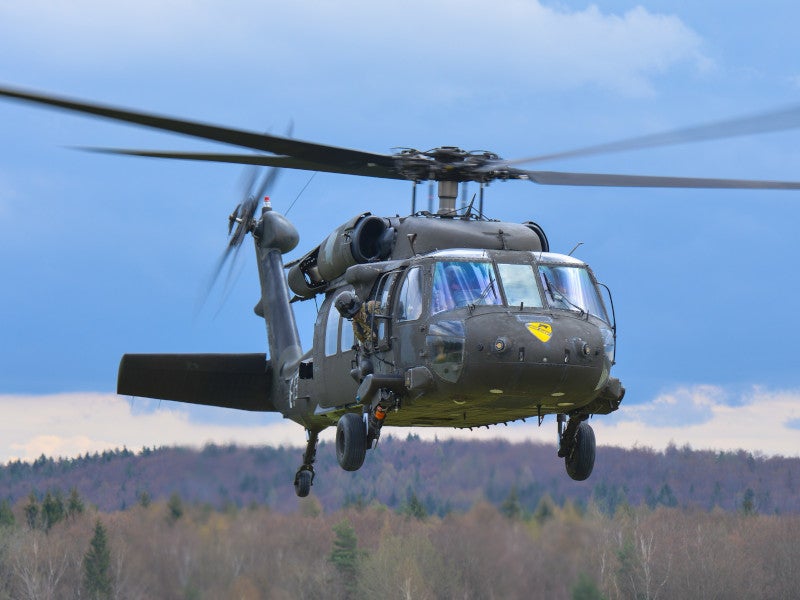Maximizing Security: Important Upkeep Tips for Your UH 60 Helicopter
Maximizing Security: Important Upkeep Tips for Your UH 60 Helicopter
Blog Article
Navigating Uh 60 Helicopter Laws and Compliance Requirements

Regulatory Framework Overview
The regulatory structure controling UH-60 helicopter procedures includes a facility collection of regulations and criteria established by aeronautics authorities. These laws are made to make sure the risk-free and efficient operation of UH-60 helicopters in various settings. The Federal Aeronautics Administration (FAA) plays a central duty in developing and imposing these regulations, which cover a variety of operational aspects, including airworthiness requirements, pilot certifications, upkeep demands, and functional procedures.
Conformity with these guidelines is vital for helicopter operators to keep the greatest levels of safety and security and operational honesty. Failure to follow these guidelines can result in significant repercussions, consisting of mishaps, injuries, and governing sanctions. Helicopter operators need to stay notified concerning the newest regulative growths and guarantee that their procedures are in complete compliance with all suitable regulations and standards.
Airworthiness Regulations and Inspections
Amidst the regulative structure regulating UH-60 helicopter procedures, an essential focus rests on compliance with Airworthiness Directives and conducting thorough evaluations to maintain security requirements and operational dependability. Airworthiness Regulations (ADs) are provided by aviation authorities to deal with hazardous conditions in airplane, consisting of the UH-60 helicopter, and required particular actions to be taken by proprietors or drivers. Conformity with ADs is necessary, and failure to comply with these directives can result in serious effects, consisting of grounding of the airplane.
Regular inspections are paramount to ensuring the airworthiness of UH-60 helicopters. These examinations incorporate a variety of checks, from regular everyday inspections performed by pilots prior to and after flights to more thorough arranged maintenance examinations accomplished by certified mechanics. In addition, unique evaluations might be needed based on details conditions or events. By sticking to a strict examination program, drivers can spot and resolve possible problems without delay, consequently enhancing the safety and security and reliability of UH-60 helicopter procedures.
Pilot Certifications and Training

Pilot training for UH-60 helicopters is comprehensive and covers a vast array of subjects, consisting of aircraft systems, emergency procedures, navigation, and mission-specific training. Additionally, pilots go through simulator training to practice different emergency situations in a controlled atmosphere. This training helps pilots establish the necessary skills to take care of difficult scenarios efficiently.


In addition, recurring training and professional advancement are necessary for UH-60 pilots to remain present with the current regulations, innovation, and finest methods. By purchasing pilot qualifications and training, drivers can boost security, enhance efficiency, and guarantee compliance with regulative needs in the procedure of UH-60 helicopters.
Operational Limitations and Needs
Pilot credentials and training work as the foundation for recognizing the functional limitations and needs linked with UH-60 helicopter procedures (uh 60). These operational constraints are placed in place to make certain the security of the crew, guests, and the aircraft itself. Functional restrictions may include variables such as climate condition, weight constraints, altitude restraints, and operational borders. It is vital for pilots to be well-versed in these constraints to make informed decisions throughout trip operations. Additionally, compliance requirements, such as sticking to details trip paths, interaction protocols, and emergency treatments, are vital for maintaining operational security and governing conformity. Pilots should remain current with all operational limitations and requirements through routine training, rundowns, and assesses to minimize dangers and ensure effective and secure UH-60 helicopter procedures. By focusing on adherence to these functional standards, pilots can enhance the general safety and security and effectiveness of their missions while upholding regulative requirements.
Emergency Procedures and Conformity Screening
Reliable emergency situation treatments and complete conformity testing are vital elements of maintaining operational safety and regulatory adherence in UH-60 helicopter procedures. Emergency situation procedures encompass protocols for numerous circumstances, consisting of engine failures, fires, hydraulic issues, and extra. Pilots and staff participants need to be fluent in these procedures to respond promptly and successfully in emergencies. Regular conformity screening guarantees that the helicopter meets all governing demands established forth by air travel authorities. This testing entails detailed examinations, checks, and examinations to confirm that the airplane is airworthy and in compliance with all applicable guidelines.
Conformity screening also encompasses equipment onboard read this article the UH-60, such as communication systems, navigating instruments, and safety and security gear. Making sure that all equipment is working correctly and satisfies governing standards is necessary for safe operations. In addition, compliance testing might entail simulations of emergency situations to analyze the team's feedback and the helicopter's performance under tension. By focusing on emergency situation procedures and compliance screening, UH-60 drivers can mitigate risks and demonstrate their dedication to safety and security and regulatory compliance.
Verdict
In conclusion, adherence to regulatory framework, compliance with airworthiness regulations, pilot certifications and training, operational restrictions, from this source and emergency procedures are necessary for browsing the laws and needs of running a UH-60 helicopter. uh 60. It is vital for drivers to focus on safety and security and make certain complete conformity with all suitable guidelines to preserve the airworthiness and operational integrity of the aircraft
Navigating the regulatory landscape bordering UH-60 helicopter procedures requires a nuanced understanding of the elaborate web of rules and compliance needs.Conformity with these guidelines is vital for helicopter operators to maintain the highest possible degrees of security and operational integrity.Among the regulative framework governing UH-60 helicopter procedures, an essential emphasis lies on compliance with Airworthiness Directives and performing complete assessments to support safety criteria and operational reliability.Reliable emergency top article treatments and complete compliance screening are essential parts of preserving operational security and regulative adherence in UH-60 helicopter operations. Regular conformity screening guarantees that the helicopter fulfills all regulative needs set forth by aviation authorities.
Report this page